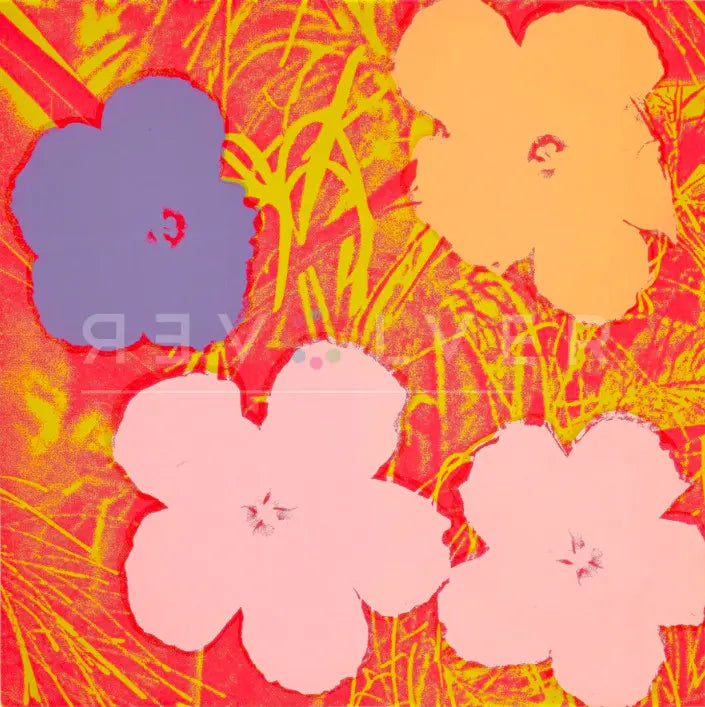
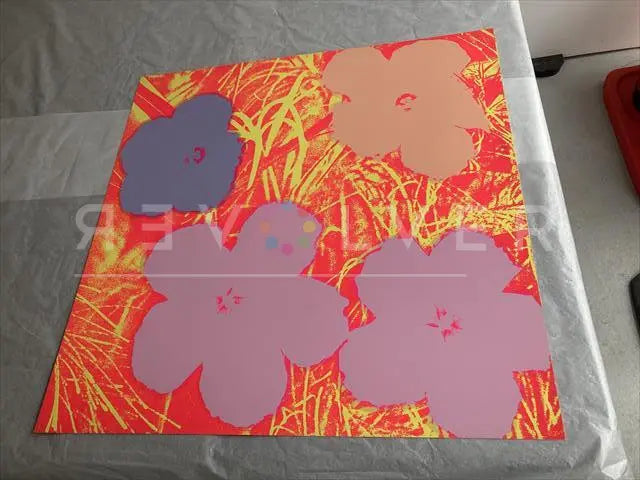
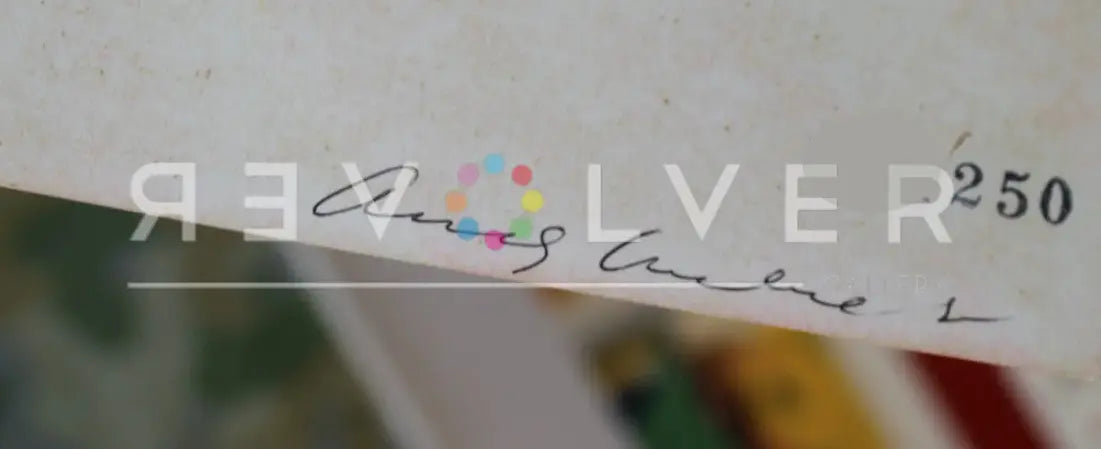
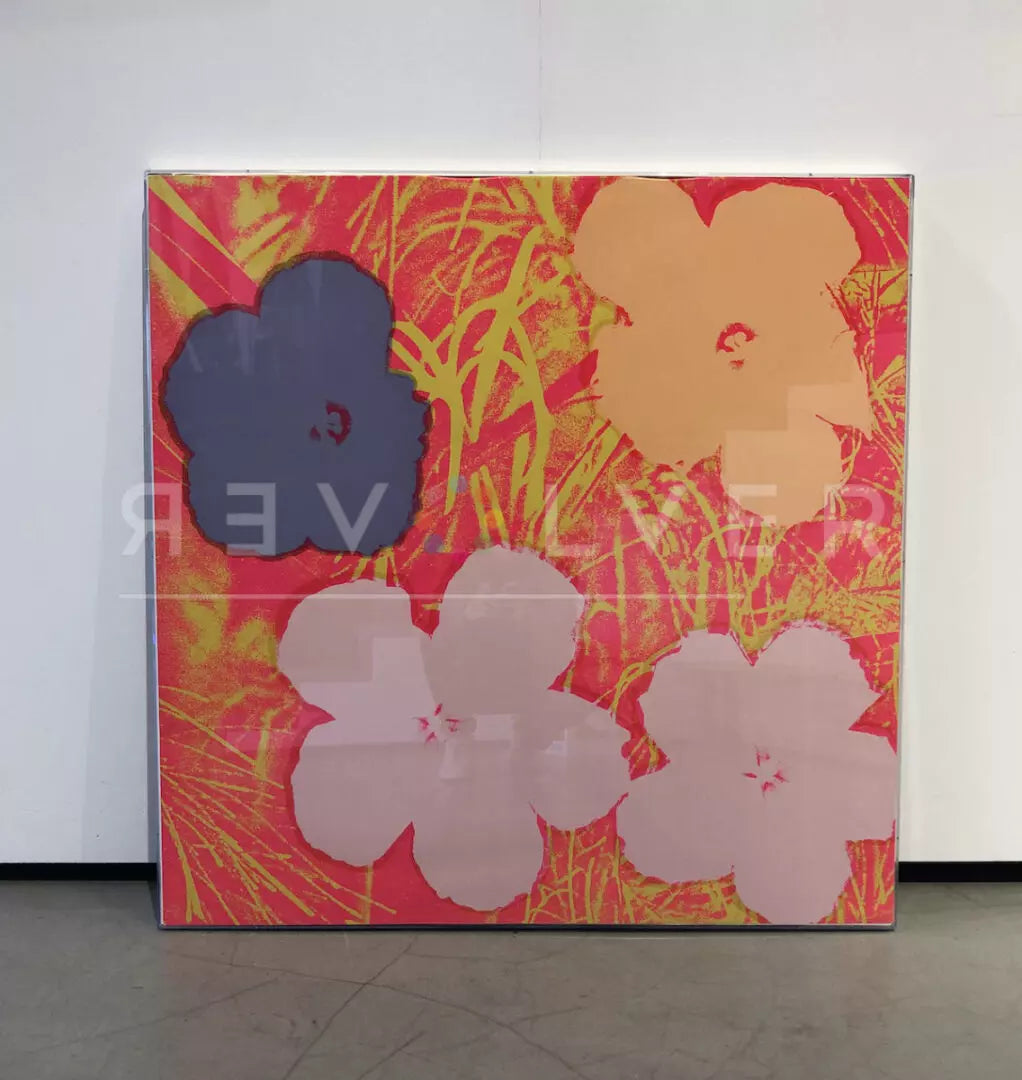
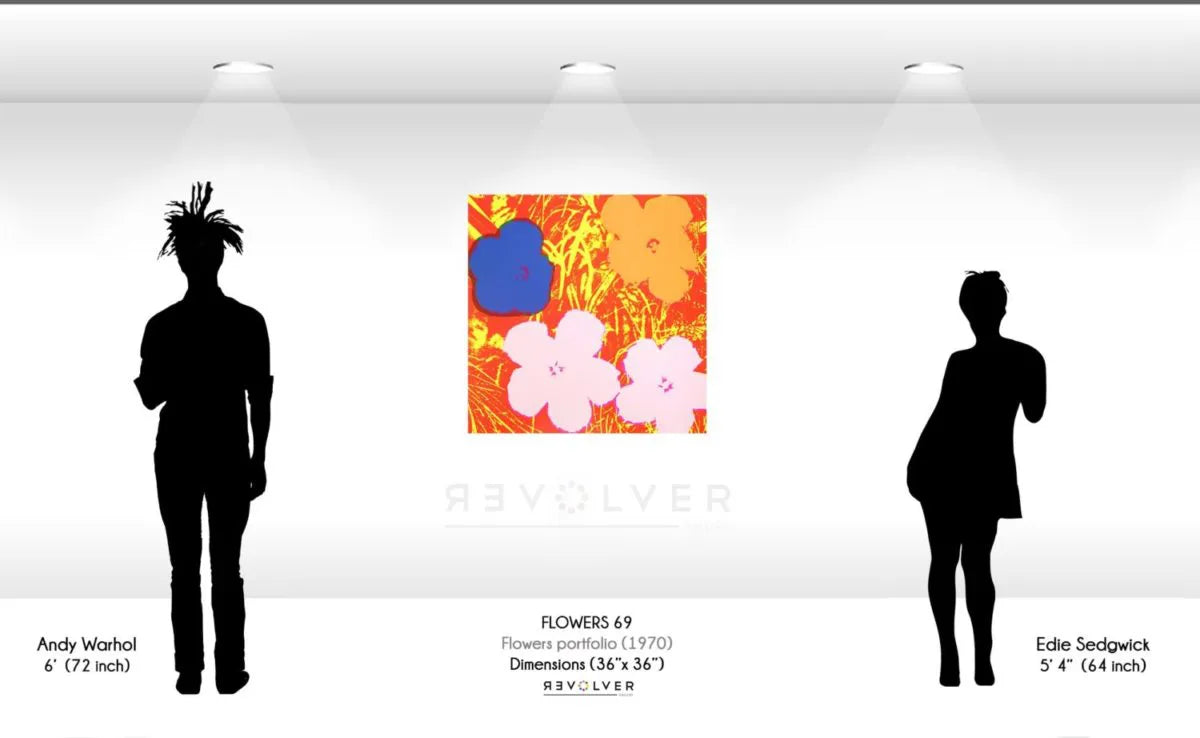
Andy Warhol - Flowers (FS II.69)
Artist: Andy Warhol
Year: 1970
Medium: Screenprint on paper
Edition: Edition of 250 signed in ball-point pen and numbered with a rubber stamp on verso; some dated. There are 26 AP signed and lettered A-Z in ball-point pen on verso.
Size: 36" x 36"
Original Flowers Print by Andy Warhol
Flowers 69 by Andy Warhol is a screenprint from the artist’s Flowers portfolio, published in 1970. The clash of radiant colors in Flowers 69 is distinctive of Warhol’s Pop sensibilities. In this image, he amplifies the appearance of hibiscus flowers blooming in a field of grass. By removing minute details and leaving the naked shape of four flowers, Warhol distills the subject’s beauty to its quintessence. “In the sixties,” he said, “you’d go and play up what a thing really was, you’d leave it ‘as is’.” Though the flowers appear stripped down, even deconstructed, they are still easily recognizable and familiar. Moreover, Warhol knew he could employ color and contrast to modernize such a classic symbol.
Flowers 69 displays the pale pink, blue and orange flowers against a hellish red backdrop. While the hibiscus blossoms remain front and center in this print, the intense, near-blinding hues in the background overshadow them. More than likely, Warhol chose to present the foreground as less important to challenge others’ expectations. After all, he claimed “Pop is just taking the outside and putting it on the inside or taking the inside and putting it on the outside”. With that being said, the choice to use loud, electric colors is characteristic of Warhol’s standpoint as a Pop artist. With a strong background in commercial art, Warhol always intended to magnetize the viewer’s attention. This approach is also particularly evident in Andy Warhol’s Marilyn Monroe portfolio as well as his later, 1985 Ads series. Therefore, it’s likely that, partly due to his training, he naturally made Flowers 69 as arresting as possible.

